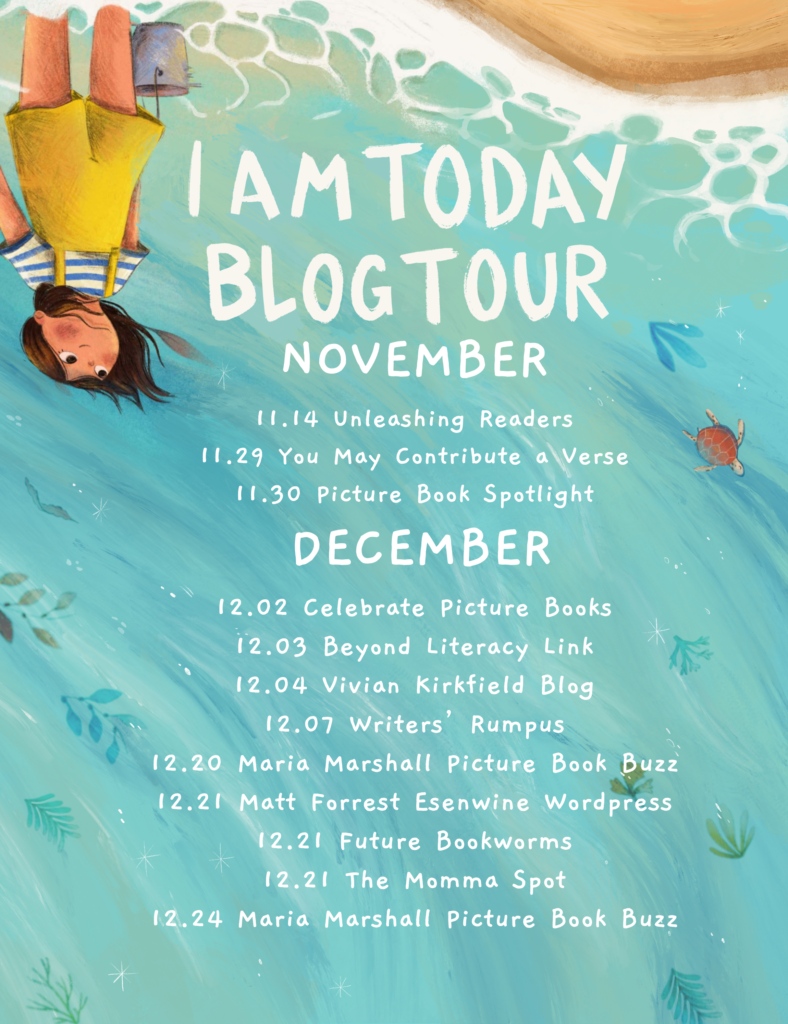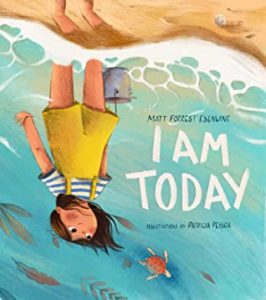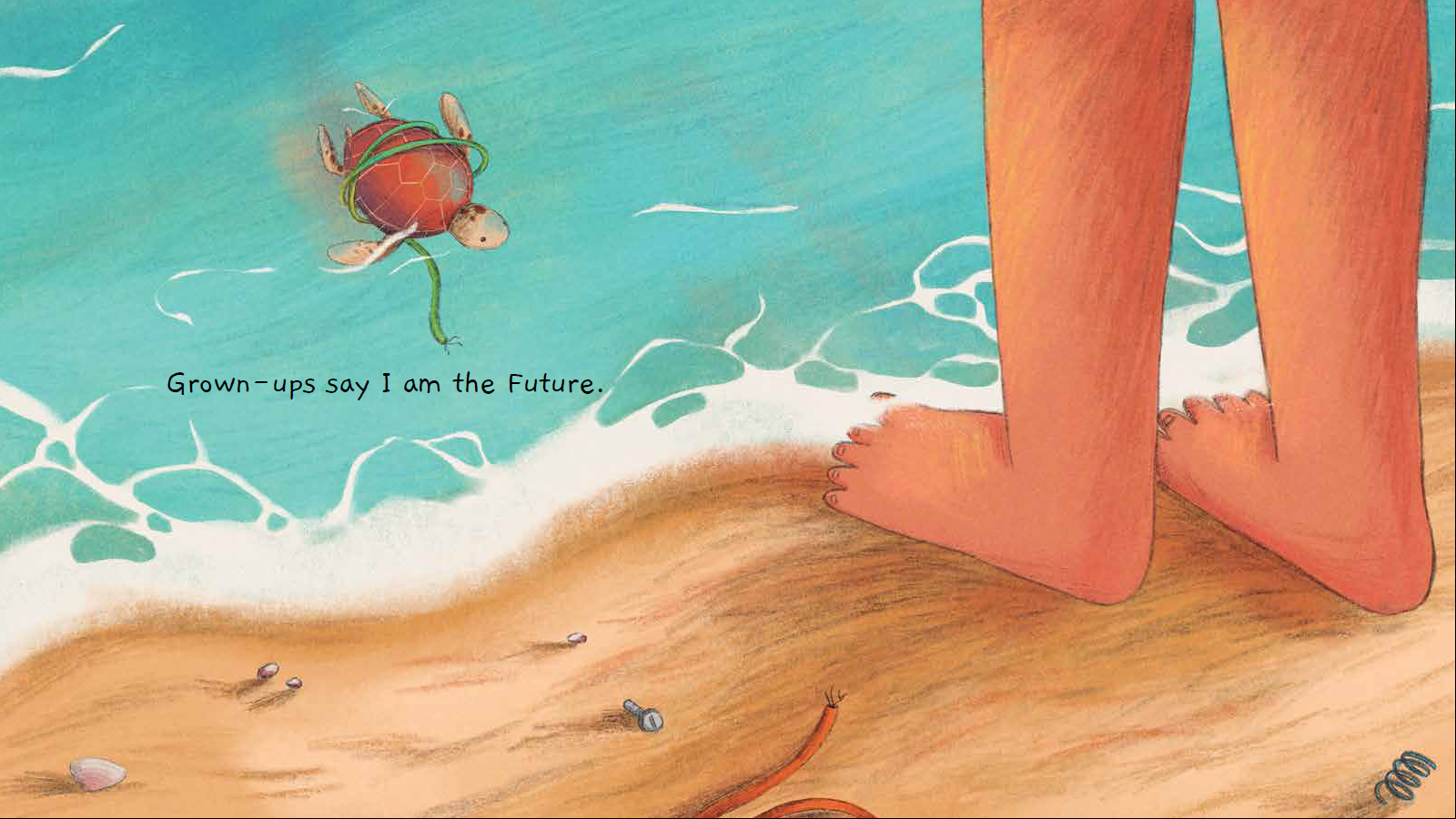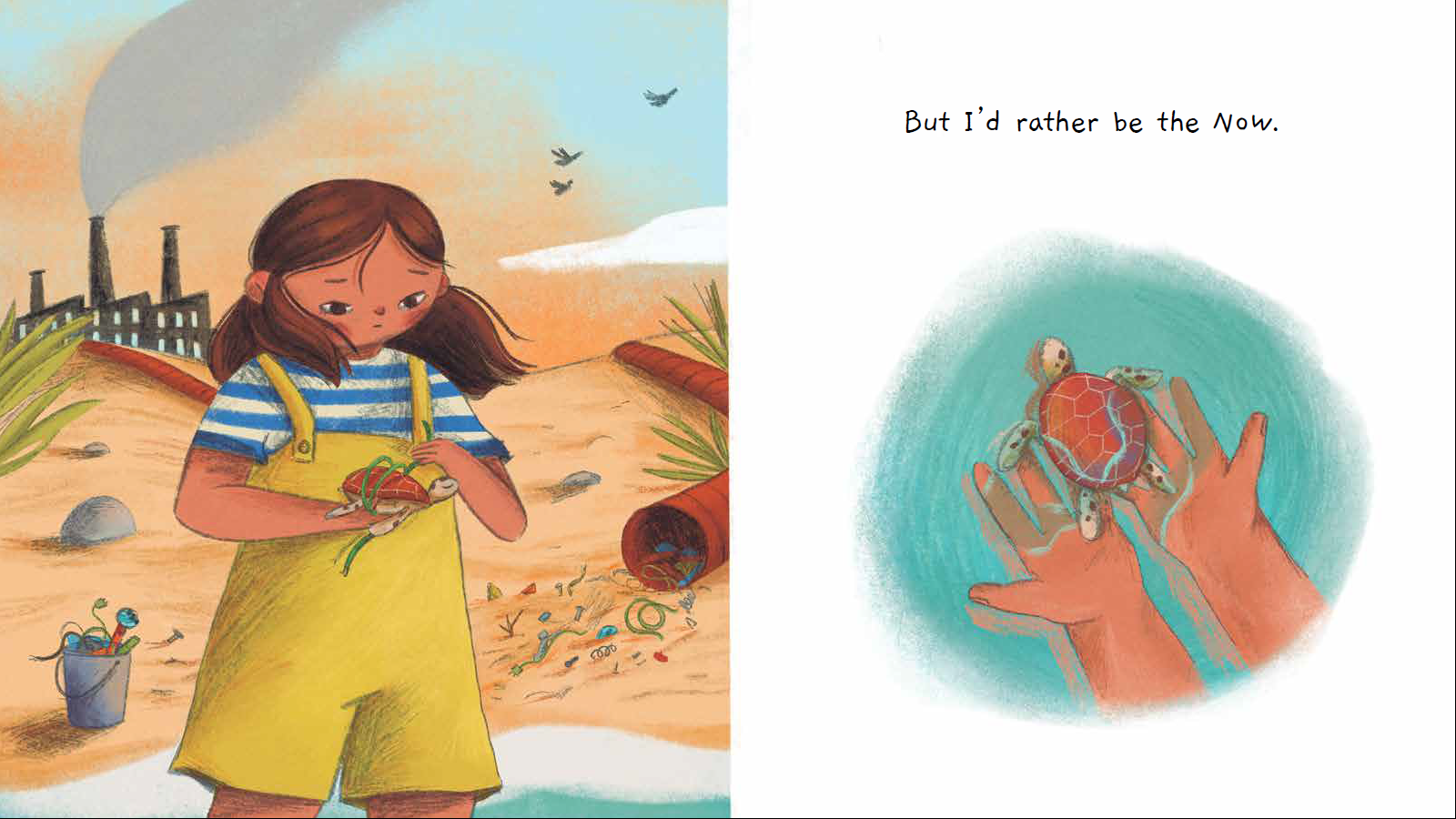“Non-grammatical doesn’t always mean wrong”
The year that shall live in infamy…
School was at home, play dates were via computer, vacation plans were stalled.
The pandemic shut-down was difficult for many people in many ways; however, as hard as it was for as adults to deal with, it was especially hard on kids, many of whom had no idea what was going on, or why. I felt like I needed to write something to empower kids, to help them realize they do have some control over certain things.
So in late summer of last year I began brainstorming ideas by doing something unusual. I made a concerted effort to come up with a non-grammatical title. A strange way to begin the writing process, but I thought a non-grammatical title might not only be poetic and thought-provoking but would certainly catch attention sitting on a bookshelf!
As I thought about it, the phrase “I am today” eventually popped into my head, and I loved it! Kids are always being told they are “the Future” – but what if a child doesn’t want to wait, to make a difference? The concept for my next picture book was born.
Non-grammatical doesn’t always mean “wrong”:
These days, it seems grammar police are everywhere; allow auto-correct to add an apostrophe to the word “its” in your social media post and suddenly a cute little possessive pronoun is the subject of derision and ridicule by everyone who reads it. And let’s not even get started on the “your” and “you’re” brigade!
No one appreciates proper grammar more than me. Certainly, it’s important to teach grammar, spelling, and such. Verb conjugations, parts of speech, sentence diagrams are all important and all have their place in education. But as someone who writes a lot of poetry, I would suggest that going out of one’s way to be non-grammatical on purpose might have some uses – and be quite fun.
You see, a phrase is only non-grammatical when there is no context, or it is used out of context. Take the title of my new picture book, “I Am Today.” How can a person be an adverb?? (Yes, “today” can also be a noun, but we’re not going to split hairs) On its own, the phrase “I am today” would not normally make sense – but once the story is read and we understand what the main character is thinking, it suddenly makes all the sense in the world.
We tell kids “they are the future” – which, to be honest, could be considered just as non-grammatical as “I am the future.” So if we are proud when children consider themselves to be “the future,” it’s not much of a stretch to understand why a child might want to be “today.”
Putting non-grammatical phrases to use…
Now that you (hopefully) understand my rationale for cheering on grammar that would make my high school English teacher Mrs. Jencks scream, here’s what I think is really cool: getting students to think creatively and/or poetically by deliberately creating non-grammatical phrases!
Think about it: why can’t phrases like “puddles of books” or “running the rainbow” or “soccer seriously” be legitimate springboards to something fantastic – a story, a poem, a song?
Many of us (your faithful guest poster, included) are always encouraging young people to come up with new ideas for writing, yes? Since essays, stories, homework assignments always need to be correct and proper, why not turn things on their head for a change and give kids a chance to do something totally different?
Encourage students to put together phrases that sound completely wrong, then have them write the story or poem that goes with it. Or better yet, put all their non-grammatical phrases together and draw them randomly so students need to write based on someone else’s phrase.
Phrases like those three I mentioned earlier, while possibly a bit odd-sounding, would all be perfectly at home in a poem. That’s what poets do, after all – coin phrases, turn words around, make unexpected connections.
Poets speak in terms that are new to their readers, using metaphors, similes, and comparisons that are thought-provoking and unforeseen. What better way to get students thinking in this way than by showing them the value of putting words together that everyone normally tells them not to do?
Knowing most middle school and high school students, they’ll seize any opportunity to do something they’re not supposed to do. So capitalize on that – and see what happens!
About the Author from the Author:
As a former radio broadcaster, I spent a good part of my life writing and producing commercials, comedy bits, and news stories. At various times I was also an event DJ, country dance instructor, news reporter, cook, telemarketer, ice cream scooper, and photography sales dude…and never figured out how to make a living doing any of it.
I also loved poetry – my first published poem was in 1984 when I was still in high school – and over the years I’ve had numerous adult-oriented poems published in various journals and anthologies including the Donald Hall tribute, “Except for Love (Encircle, 2019). In 2012 my poem, “Apple-Stealing” was nominated for a Pushcart Prize and in 2019 I was the recipient of the MacGregor Poetry Prize, coordinated by the Robert Frost Farm board of trustees and Derry (NH) Public Library.
Anyhoo…little did I know all this short-form writing would lead to my debut picture book, “Flashlight Night” (Boyds Mills & Kane, 2017), which received numerous positive reviews including a Kirkus star and was selected by the New York Public Library as one of the Best Books for Kids 2017. I now have a dozen books out or under contract, including “Once Upon Another Time” (Beaming Books, 2021), co-authored with my friend, Charles Ghigna (aka, Father Goose®).
Meanwhile, my children’s poetry can be found in anthologies like “The National Geographic Book of Nature Poetry” (National Geographic Children’s Books, 2015), “Night Wishes” (Eerdmans, 2020), and “Construction People” (Wordsong, 2020), the latter of which chosen by Kirkus as one of the Best Picture Books of the Year. Take a gander at all my books here.
Matt lives in New Hampshire with his wife, kids, and more pets than he has fingers, so don’t ask him to count.
Expected Publication November 30th, 2021 by POW! Kids Books
About the Book: A young girl realizes that she doesn’t have to wait until she’s grown-up to stand up for what is right and make a big impact.
While playing on the beach in her coastal town, a young girl comes across a sea turtle ensnared by a wire. Her town is home to a factory that has provided jobs for many of her neighbors, including her mother, but it has also been dumping garbage from a pipe into the waters, threatening the creatures that live in them.
Children are used to being asked what they’ll do and be when they grow up, but the girl knows there is so much she can do today to help. Unable to forget the sight of the struggling turtle, with a fantastic act she inspires the townspeople to compel the factory to change its destructive ways.
Written in spare and evocative poetry, I Am Today is an empowering story for children who want to be the change the world needs.
Teachers’ Tools for Navigation and Discussion Questions:
Please view and enjoy the educators’ guide for I Am Today
Flagged Passages:
Thank you, Matt, for this post to make us, as adults, think a little bit more out of the box!





20 thoughts on “Author Guest Post and Educators’ Guide: I Am Today by Matt Forrest Esenwine, Illustrated by Patricia Pessoa”